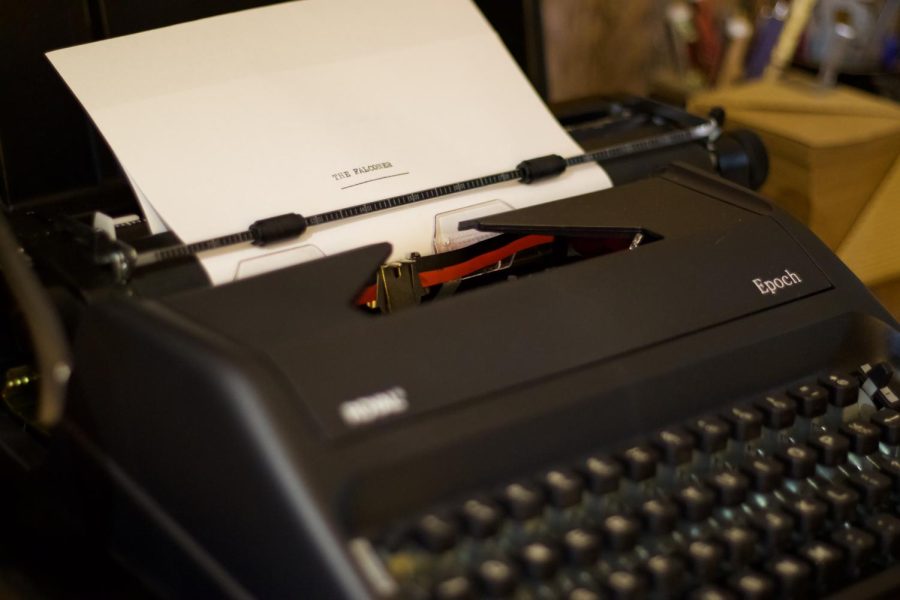Typewriters: Machines That Should Never Become a Thing of the Past
Typewriters have a gorgeous aesthetic that makes them stand out as a method for writing.
February 23, 2022
Typewriters — the more elegant precursor to computers. They should make a comeback.
At La Salle, essays are primarily written using students’ individual iPads, rows of computers in the library, or on a Chromebook from the cart that classes can borrow.
Typing is in no way a lost skill and could benefit from being isolated from internet access. iPads, computers, and Chromebooks, while all providing the ability to type, also provide the possibility of falling down a rabbit hole of online games, YouTube videos, and memes.
On a typewriter, you can get your thoughts and ideas on paper quicker than you would when handwriting while avoiding the temptation of a YouTube compilation.
Typewriters should not die out and become a rarity — instead, they should be integrated into standardized testing practices.
According to Pew Research Center, in 2008 “almost two-thirds of teens (65%) say they usually do their school writing by hand, compared with 16% who usually use a computer. The remaining teens say that their choice of writing instrument depends on the assignment.”
But there’s been over a decade and the start of a pandemic in between that study and today.
Since then, teenagers’ school experience was entirely digitalized for nearly a year. As March of 2022 comes around the corner, we’re approaching the two-year anniversary of when COVID-19 began to affect our lives on a large scale.
Even the SATs are heading towards being digital by 2024. Although the SAT will soon be online and no longer includes an essay section, AP tests still include a handwritten essay portion.
AP students are no strangers to the concept of having a finite amount of time to handwrite an essay-style response.
As is, there is already a time constraint component to how these tests function, limiting the student’s ability to write something that displays their full potential. By also handwriting these, the process drains even more of the limited time.
If typewriters were to be implemented, less time would be consumed by getting thoughts onto the paper with a number two pencil that risks going dull midway through the conclusion paragraph. In my experience, I have always been taught to start the essay process with a brainstorm, then move on to an outline, rough draft, peer review, and ultimately a final draft. But there isn’t sufficient time to make a decent outline, let alone go through that chain of events during a standardized test.
However, resurrecting typewriters for the sole purpose of standardized testing is impractical. So why not make them commonplace for any writing purposes?
When editing essay drafts, it’s much easier to make sure you don’t skim your own writing if you edit using a hard copy. Personally, I print out my rough drafts then go through them using a highlighter.
By using a typewriter, the extra step of sending your essay to the printer is eliminated and you start out with a hard copy ready to be marked up with places where you might have missed commas or found a better adjective.
After the review process is over and a new draft needs to be made, a typewriter requires you to start typing from the start whereas using google docs enables you to simply fix what you’ve found without going through the rest of the story allowing issues to be missed or letting revisions that don’t line up with the rest of the essay to be made.
The aesthetic of typewriters is refined and perfect for those who enjoy romanticizing their day-to-day life in order to get through the daily grind.
Among Gen Z’s fashion trends is dark academia, mainly in the form of blazers and turtlenecks. This style fits perfectly with the look and feel of typewriters.
If there’s a generation to bring typewriters back, it is Gen Z.





